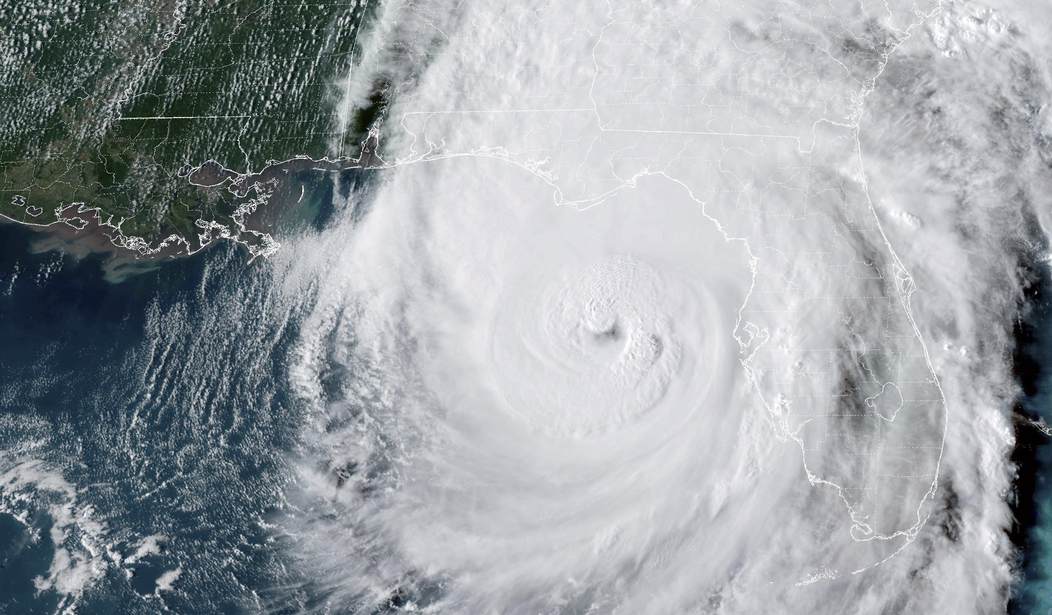We knew Hurricane Helene was going to be bad when it was upgraded to a Category 4 storm ahead of making landfall in Taylor County, Florida, Thursday night. Of paramount concern was the anticipated storm surge.
What wasn't anticipated, it seems, is the extreme flooding caused by the torrential rain from the storm as it moved inland through Appalachia, washing out roads and wiping whole towns off the map. As an amateur weather junkie, I'm struggling to wrap my brain around the scenes emerging from the affected areas and the heartrending pleas for help from those trapped or desperately seeking news of missing loved ones.
HEADS UP: Helene Is Now Officially a Category *4* Hurricane...
and Heading for Florida, Appalachia
As of mid-morning Sunday, the reports are devastating, including a death toll that stands at 64 and is expected to rise.
PERRY, Fla. (AP) — Massive rains from powerful Hurricane Helene left people stranded, without shelter and awaiting rescue, as the cleanup began from a tempest that killed at least 64 people, caused widespread destruction across the U.S. Southeast and knocked out power to millions of people.
...
Helene blew ashore in Florida’s Big Bend region as a Category 4 hurricane late Thursday with winds of 140 mph (225 kph).
From there, it quickly moved through Georgia, where Gov. Brian Kemp said Saturday that it “looks like a bomb went off” after viewing splintered homes and debris-covered highways from the air. Weakened, Helene then soaked the Carolinas and Tennessee with torrential rains, sending creeks and rivers over their banks and straining dams.
...
There have been hundreds of water rescues, none more dramatic than in rural Unicoi County in East Tennessee, where dozens of patients and staff were plucked by helicopter from a hospital rooftop Friday. And the rescues continued into the following day in Buncombe County, North Carolina, where part of Asheville was under water.
“To say this caught us off guard would be an understatement,” said Quentin Miller, the county sheriff.
Asheville resident Mario Moraga said it was “heartbreaking” to see the damage in the Biltmore Village neighborhood and neighbors have been going house to house to check on each other and offer support.
Other than some fairly heavy rain at times, we've not been directly affected by Helene here in eastern Missouri, but having driven through and stayed in and around the affected areas in eastern Tennessee and western North Carolina multiple times — and with family members set to travel through the area next week (in theory) — seeing the images and video of the destruction is a gut punch.
It's a complete "catastrophe in Asheville, North Carolina."
— RNC Research (@RNCResearch) September 29, 2024
Biden is at the beach and Kamala is too busy with her San Francisco fundraisers to notice. pic.twitter.com/qqglYOuEkq
It's true — there does seem to be an odd disconnect between some of the national media coverage of the ongoing tragedy, though some of that likely is due to the fact that much of the area simply is inaccessible at present. Additionally, the White House has issued a statement on the matter, and Biden has approved federal aid for the affected areas.
Some thoughts and observations to the state and federal response to historic flooding in Western NC from Hurricane Helene
— maybe: k*rk (@oldscarf1stweek) September 29, 2024
Its not sinking in to outsiders, or it’s just so hard to comprehend that the countless roads in Western N.C. , simply no longer exist.
The state and…
Some thoughts and observations to the state and federal response to historic flooding in Western NC from Hurricane Helene
Its not sinking in to outsiders, or it’s just so hard to comprehend that the countless roads in Western N.C. , simply no longer exist.
The state and federal response has been ongoing, with over 1,000 personnel, including National Guard assets, deployed according to FEMA. Disaster Declaration for NC have been expedited, approved, but…
Those crews cannot traverse over collapsed bridges, 100+ foot ravinesthat weren’t there before.
Main interstates I-40 and I-26 have collapsed.
Primary state routes are scoured.
The secondary roads into neighborhoods are effectively eviscerated, for miles. Survivors *can’t* get out, help *can’t* get in.
It’s hard enough to get into Asheville. 30 minutes drives take 8-12 hours with the roads not existing, the remaining gas stations swamped. To get into the towns in villages in the mountains is a days journey if possible at all. National Guard trucks with food and water have to stop and collapses. The tools and supplies for SAR aren’t getting in via road.
Similar to Hurricane Katrina, where boats and helicopters were the only viable means of aid delivery in the first days, air support is currently the most effective way to connect Western NC to the outside world. There’s a limited amount of helicopters operating. Although the water has receded, the roads are still impassable.
This is still very much an active search and rescue mission not a recovery. There is a high number of missing (in the thousands per state media) because people can’t get in touch with loved ones. We saw this after Hurricane Ian as well, that number will drop significantly when phone service/internet returns. For death toll and recovery, the final number will not be known for at least a month in the region.
The lack of media presence on the ground isn’t due to neglect—reporters can't get into many areas, for the same reason help can’t. Even if they could, there is phone and internet do not exist.
This is not going to be a quick recovery for anyone. Some rural parts of Western NC may not be rebuilt.
Politics aside, what's clear is that much of the Southeast is hurting and in need of assistance — and prayer.
Made it to Asheville, NC. We have setup @Starlink for public use. We are arranging a centralized spot for anyone else to use it.
— Chris Hall, Y'all (@ChrisHallWx) September 29, 2024
Will update.
This area needs every single bit of help they can get. @nicksortor pic.twitter.com/nnU8nr57hX
This shatters my heart. God bless the EMS personnel who left everything on the ground and moved sick and elderly to the roof by hand to save their lives.
— Billy Bowling 𝕏 (@babowling12) September 28, 2024
📍Erwin, TN pic.twitter.com/jjIXVHcmcz
Horrific Flooding yesterday in Black Mountain and Swannanoa, North Carolina.
— Billy Bowling 𝕏 (@babowling12) September 28, 2024
Human impacts from Helene in WNC will rival Hurricane Katrina based on the hell I’ve seen the last 48 hours.
📍Black Mountain, NC pic.twitter.com/pFK8K5RJdf














Join the conversation as a VIP Member